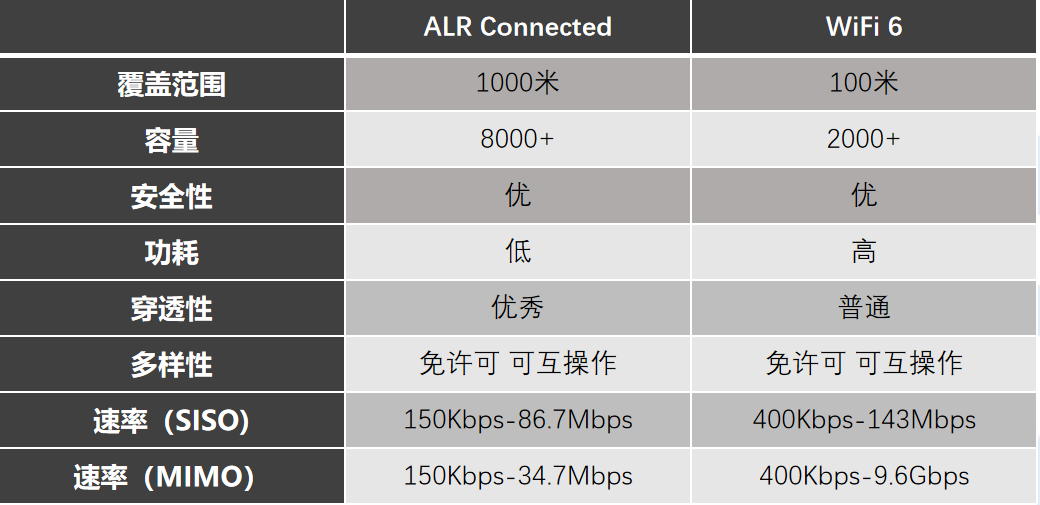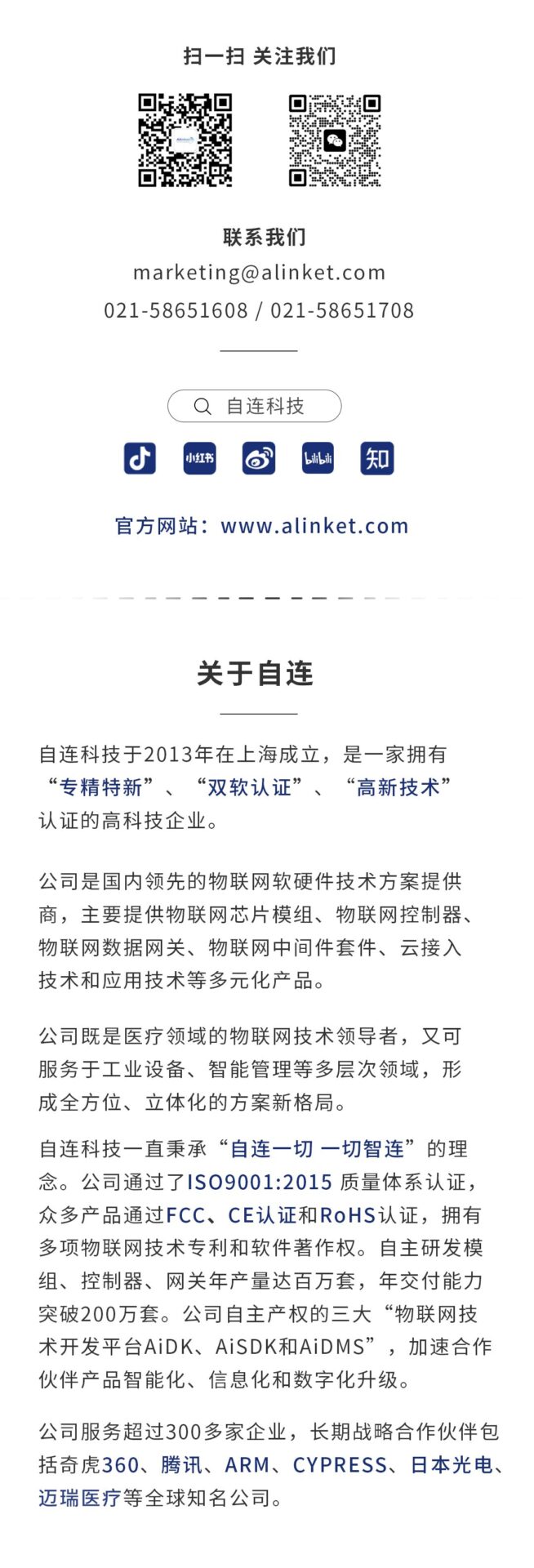
Wi-Fi communication technology has become the most common and widely used communication technology in wireless local area networks (WLAN). From Wi-Fi 4, Wi-Fi 5 to Wi-Fi 6,traditional Wi-Fi technology provides excellent data rates over short distances, suitable for data-intensive application scenarios.
However, with the exponential growth of IoT devices today, more application scenarios have higher requirements for communication in terms of connection distance, power consumption, penetration, and access capacity, necessitating a reliable communication method that better meets the needs of the scenario to maintain connectivity.
ALR Connected™ technology is designed to meet the above needs and is an ideal solution for long-distance, low-power IoT connectivity.
When comparing the performance of ALR Connected technology with traditional Wi-Fi (here we compare with Wi-Fi 6), there are significant differences:

Connection Distance
Compared to traditional Wi-Fi technology, ALR Connected technology has made significant improvements in communication distance. Traditional Wi-Fi communication distance is only about 100 meters, while ALR Connected technology can achieve signal transmission over much longer distances, providing effective connections up to 1000 meters, greatly expanding coverage.

Penetration
Traditional 2.4GHz and 5GHz Wi-Fi technologies experience significant signal attenuation when penetrating walls and other obstacles. ALR Connected technology uses lower frequencies, which can better overcome this issue and penetrate obstacles more effectively compared to high-frequency protocols, thus reducing the cost and complexity of deploying endpoint devices.

Power Consumption
ALR Connected technology is more energy-efficient and has lower power consumption compared to traditional Wi-Fi. This is because ALR Connected technology can maintain a low power state through various sleep modes defined in the 802.11ah specification, while also using narrow channels to save power, allowing IoT devices to operate for months or even years without needing battery replacement or charging.

Access Point Capacity
ALR Connected technology can handle more than 8000 devices per access point (AP), compared to Wi-Fi 6 APs which can support 2000 devices, making the access point capacity four times greater. This greatly increases the number of connected application scenario endpoints, whether in smart cities, smart buildings, or smart factories.

Interference Resistance
Traditional Wi-Fi 2.4GHz wireless band suffers from significant congestion and poor interference resistance. In contrast, ALR Connected technology canreduce the need for signal repeaters, while connecting more devices and experiencing less channel interference, thus improving overall communication efficiency.

Security
Both ALR Connected technology and Wi-Fi 6 employ the IEEE 802.11 protocol and supportWi-Fi Alliance certification security requirements (WPA3) and remote over-the-air upgrades (OTA) with advanced encryption standards, allowing for secure OTA firmware upgrades.

Data Rate
Traditional Wi-Fi 6 offers faster data transmission rates, suitable for applications that require short distances, high throughput, and low latency, such as high-definition video streaming and online gaming.
ALR Connected technology’s data transmission rates are suitable for a wider range of IoT devices, from low-rate low-power sensors to high-rate cameras.
To summarize the performance comparison between ALR Connected technology and Wi-Fi 6:

Which Scenarios Require Long-Distance Wi-Fi Solutions
The differences in performance do not imply that one Wi-Fi technology is superior to another; selecting an appropriate technology solution based on application scenarios can maximize their respective performance advantages.
Wi-Fi 6 is suitable for bandwidth-intensive, low-latency scenarios.
If IoT applications require more access capacity, longer transmission distances, stronger penetration, and lower power consumption, then ALR Connected should be the first choice.

ALR Connected long-distance Wi-Fi is suitable for many large indoor and outdoor IoT scenarios, such as photovoltaics, maritime, industrial automation, smart agriculture, smart cities, smart buildings, warehouses, campuses, etc.

